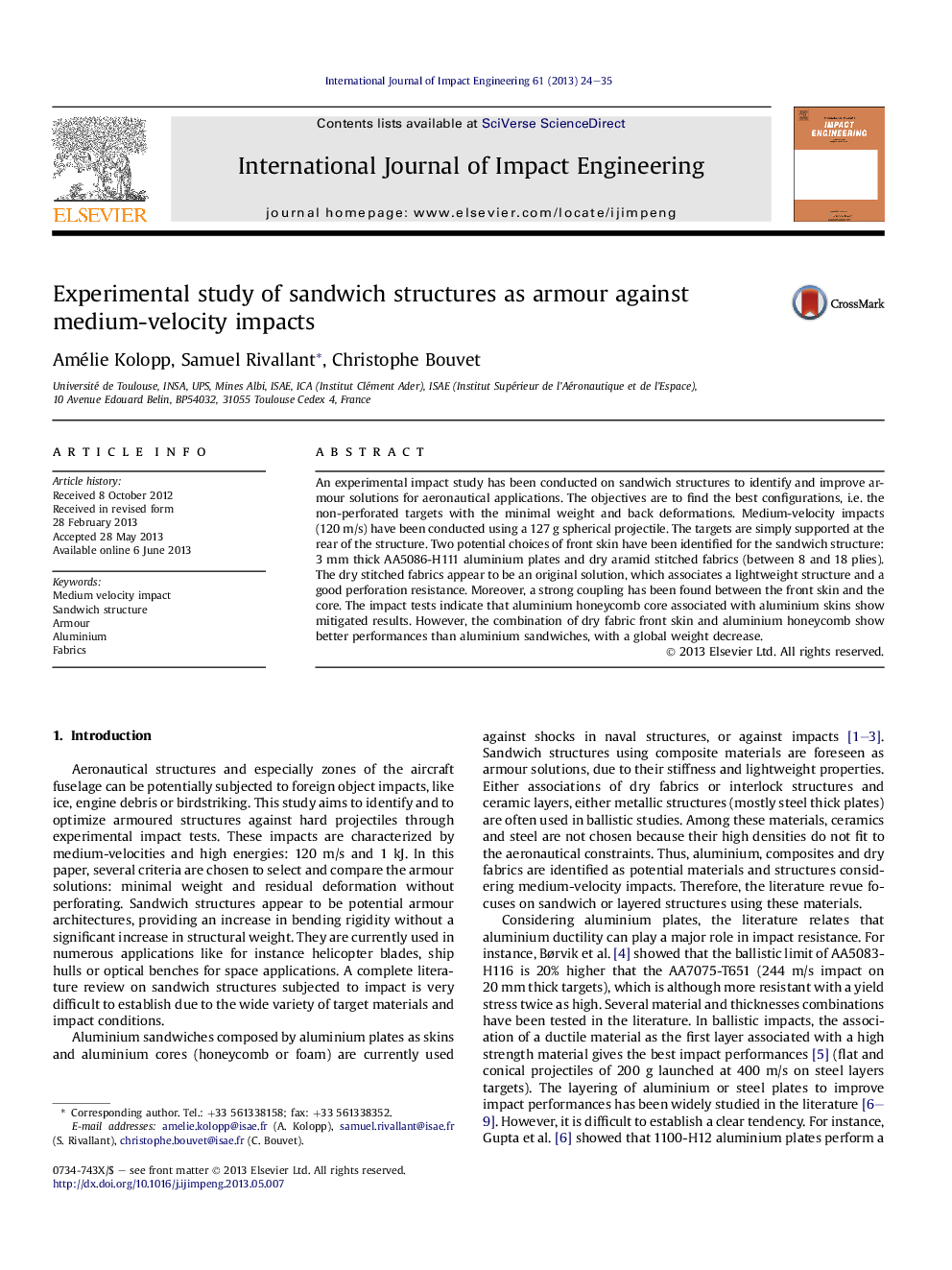| Article ID | Journal | Published Year | Pages | File Type |
|---|---|---|---|---|
| 779409 | International Journal of Impact Engineering | 2013 | 12 Pages |
•Sandwich structures as armour are tested under medium-velocity/high energy impact.•Aluminium and aramid dry stitched fabrics are identified as potential front skin.•The skin/core coupling is studied to characterize the sandwich response.•The core presence leads to the aluminium skins decoupling and the perforation.•Dry fabric front skin structures are more lightweight and performing solutions.
An experimental impact study has been conducted on sandwich structures to identify and improve armour solutions for aeronautical applications. The objectives are to find the best configurations, i.e. the non-perforated targets with the minimal weight and back deformations. Medium-velocity impacts (120 m/s) have been conducted using a 127 g spherical projectile. The targets are simply supported at the rear of the structure. Two potential choices of front skin have been identified for the sandwich structure: 3 mm thick AA5086-H111 aluminium plates and dry aramid stitched fabrics (between 8 and 18 plies). The dry stitched fabrics appear to be an original solution, which associates a lightweight structure and a good perforation resistance. Moreover, a strong coupling has been found between the front skin and the core. The impact tests indicate that aluminium honeycomb core associated with aluminium skins show mitigated results. However, the combination of dry fabric front skin and aluminium honeycomb show better performances than aluminium sandwiches, with a global weight decrease.
